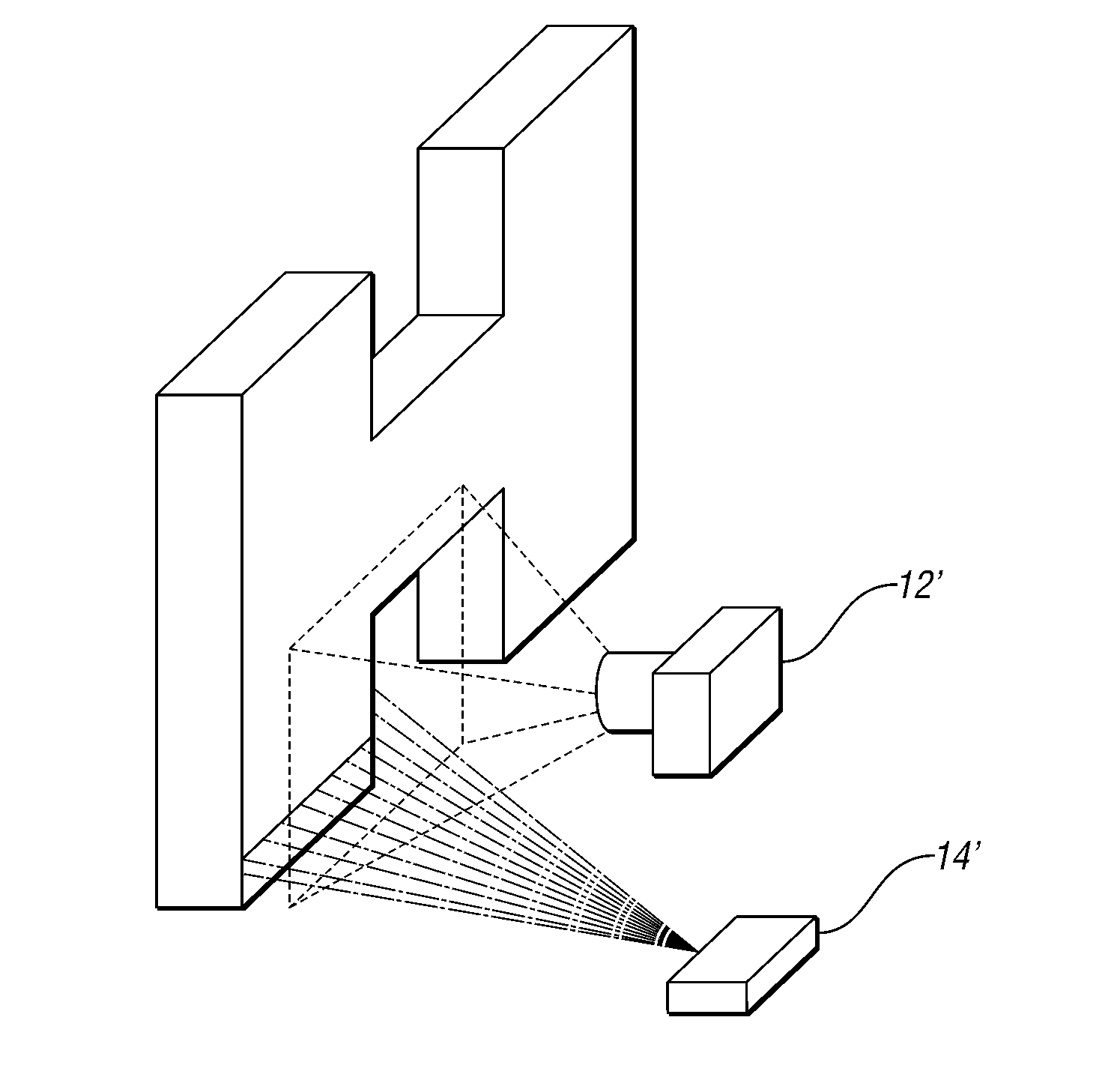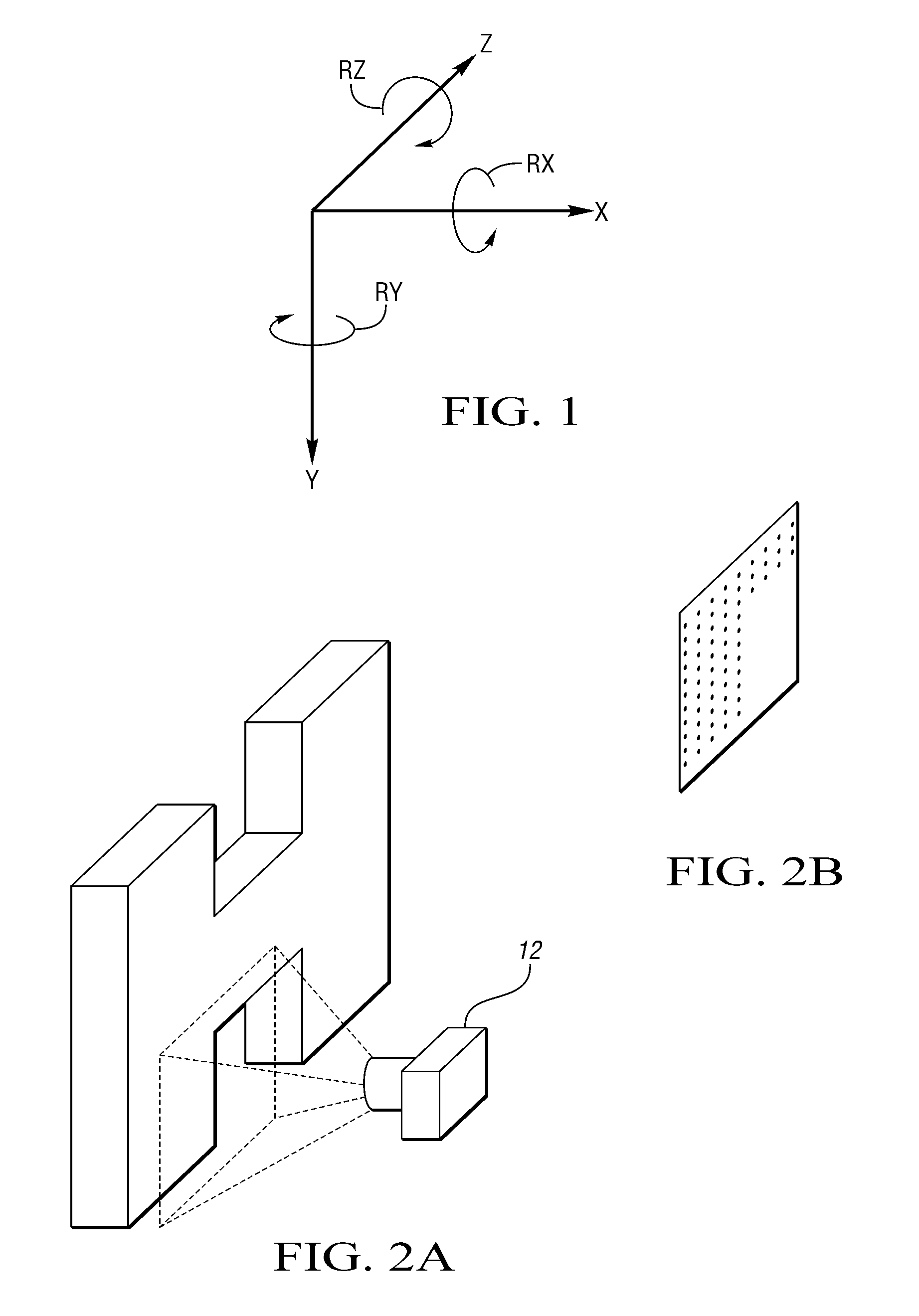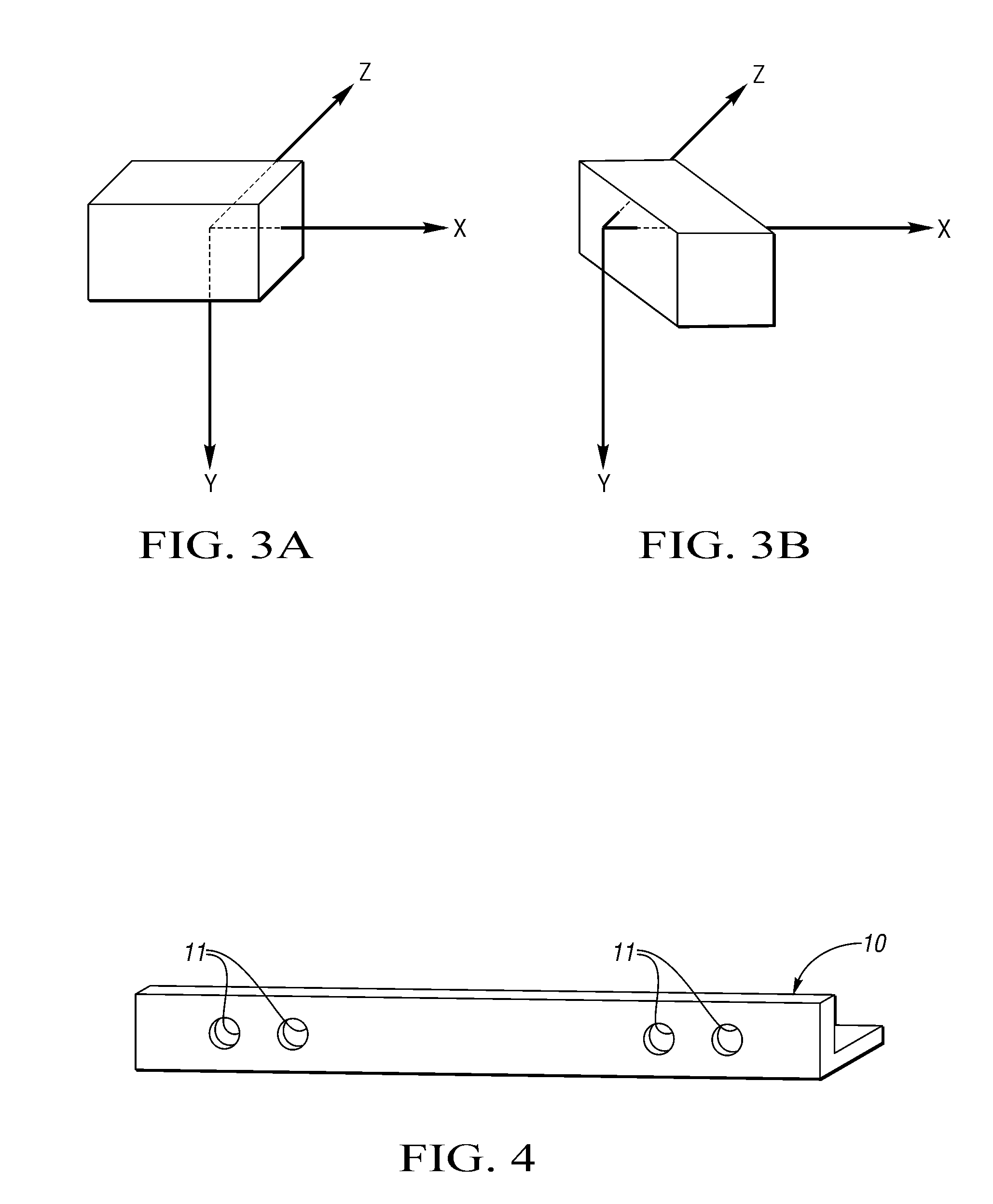3-d imaging and processing system including at least one 3-d or depth sensor which is continually calibrated during use
a technology of 3d imaging and processing system, applied in image enhancement, image analysis, instruments, etc., can solve the problems of inability to determine the pose of a workpiece, sensor configuration may be unsuitable, and sensor accuracy may suffer from limited accuracy,
- Summary
- Abstract
- Description
- Claims
- Application Information
AI Technical Summary
Benefits of technology
Problems solved by technology
Method used
Image
Examples
Embodiment Construction
[0048]As required, detailed embodiments of the present invention are disclosed herein; however, it is to be understood that the disclosed embodiments are merely exemplary of the invention that may be embodied in various and alternative forms. The figures are not necessarily to scale; some features may be exaggerated or minimized to show details of particular components. Therefore, specific structural and functional details disclosed herein are not to be interpreted as limiting, but merely as a representative basis for teaching one skilled in the art to variously employ the present invention.
[0049]In one preferred embodiment, the calibration apparatus is a flat, rigid, dimensionally stable bar oriented in space so that the flat surface of the bar is presented to a single 3D sensor. The apparatus is configured to subtend a number of voxels of the sensor's field of view, without obscuring the field of view entirely. This set of subtended voxels is deemed the ‘calibration set’ of voxels...
PUM
 Login to View More
Login to View More Abstract
Description
Claims
Application Information
 Login to View More
Login to View More - R&D
- Intellectual Property
- Life Sciences
- Materials
- Tech Scout
- Unparalleled Data Quality
- Higher Quality Content
- 60% Fewer Hallucinations
Browse by: Latest US Patents, China's latest patents, Technical Efficacy Thesaurus, Application Domain, Technology Topic, Popular Technical Reports.
© 2025 PatSnap. All rights reserved.Legal|Privacy policy|Modern Slavery Act Transparency Statement|Sitemap|About US| Contact US: help@patsnap.com



